The term topology conveys the connection between the endpoints or station attached to the network connection or the arrangements of the system in a computer. This topology can be either physical or logical. The physical connection or topology refers to the physically laid connection including all devices, their installation, and the location. The logical topology refers to the data transmission in a network designed for. Network Topology plays a major role in Network Cabling including CCTV Installations.
The Network topology can be categorized into various types such as a ring, bus, mesh, star, and tree topology.
Bus topology
Bus topology is the common backbone of the entire topology. It is characterized by the utilization of multiple points medium. In the bus topology, the computers and the devices are connected to an appropriate tap like structure and the devices are called as a tap. The full duplex data transmission allows the computer to send data and receive the data through the bus.
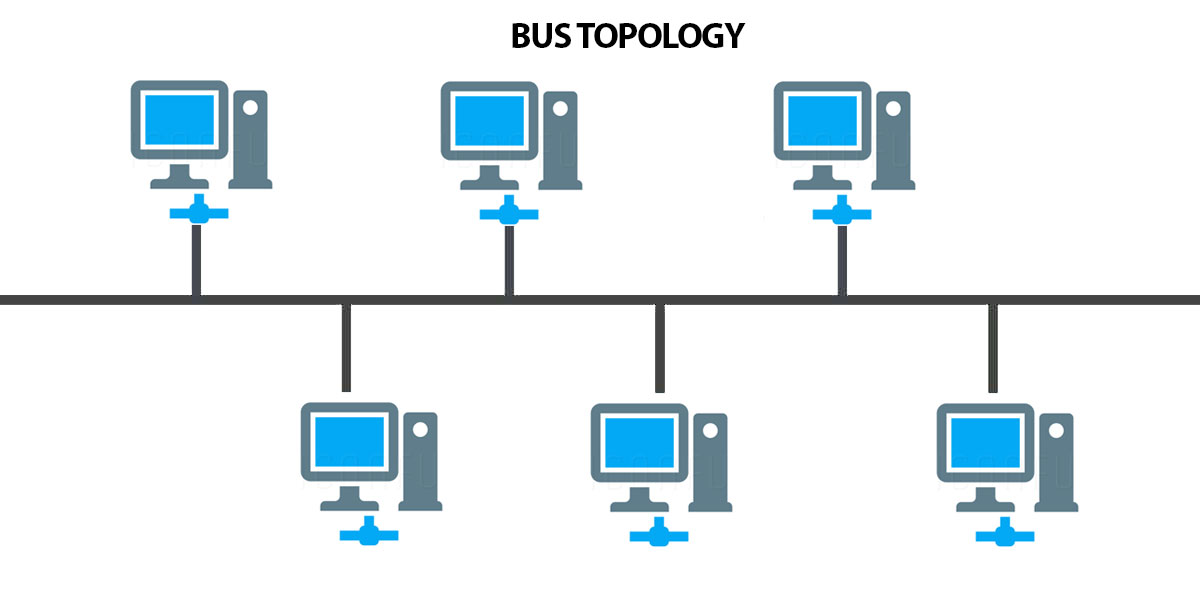 At each end of the bus, the network is terminated with a terminator which absorbs any signal and then removing it from the bus. The nodes are a connection to the bus through drop lines and taps. The drop lines are the connection running between the main cable and the device. The taps are a connector that either splice the sheathing of the cable or puncture the main cable to create a contact with the metallic core.
At each end of the bus, the network is terminated with a terminator which absorbs any signal and then removing it from the bus. The nodes are a connection to the bus through drop lines and taps. The drop lines are the connection running between the main cable and the device. The taps are a connector that either splice the sheathing of the cable or puncture the main cable to create a contact with the metallic core.
The Ethernet bus topologies are robust and relatively easy to install and does not require much cabling connections.
Advantages of bus topology:
-
- Can be installed very easily and conveniently
- Suitable for small network
- Less expensive than a star topology
- If one computer fails, the other computers are not affected in the network and will continue to work.
Disadvantages of bus topology:
-
-
- There is a limit to cable length and number of stations
- Very difficult to troubleshoot
- Maintenance cost is quite high
- If the backbone fails, the entire system will collapse
- Terminations are essential on both the end
-
Star Topology
In a star topology, a central connection point called hub is directly connected to each station through a common node. The star topology does not allow the traffic to directly the devices connected. The controller in the star topology acts as a mediator. The device, who wants to sends data to another device, sends it to the controller. The controller relays the data to the connected device.
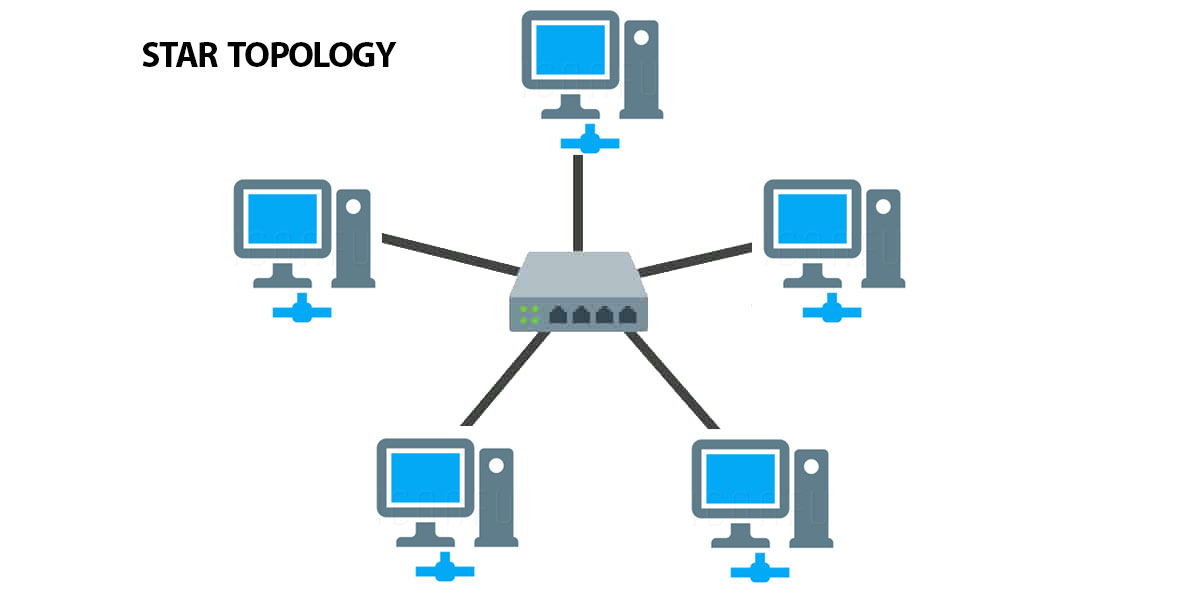 In a star topology, each device needs one link and one I/O port. The local area network connection utilizes star topology and often high-speed LANs utilizes star topology with a central hub.
In a star topology, each device needs one link and one I/O port. The local area network connection utilizes star topology and often high-speed LANs utilizes star topology with a central hub.
Advantages of star topology:
-
-
- Easy to troubleshoot
- If one link collapses, only that link is affected. The other links remain active
- No disruption in removal or addition of any devices
- Very easy to manage
-
Disadvantages of star topology:
-
-
- If the hub fails, the entire link will collapse
- Require more cable length in comparison to bus topology
- More expensive than bus topology due to the higher costs of the hubs.
-
Ring Topology:
In a ring topology, every device has two neighboring devices to communicate. The network connection in ring topology consists of a dedicated point to point connection and sets of repeaters in a closed loop. The signal is transmitted in one direction either clockwise or counterclockwise from device to device until reaches the destination.
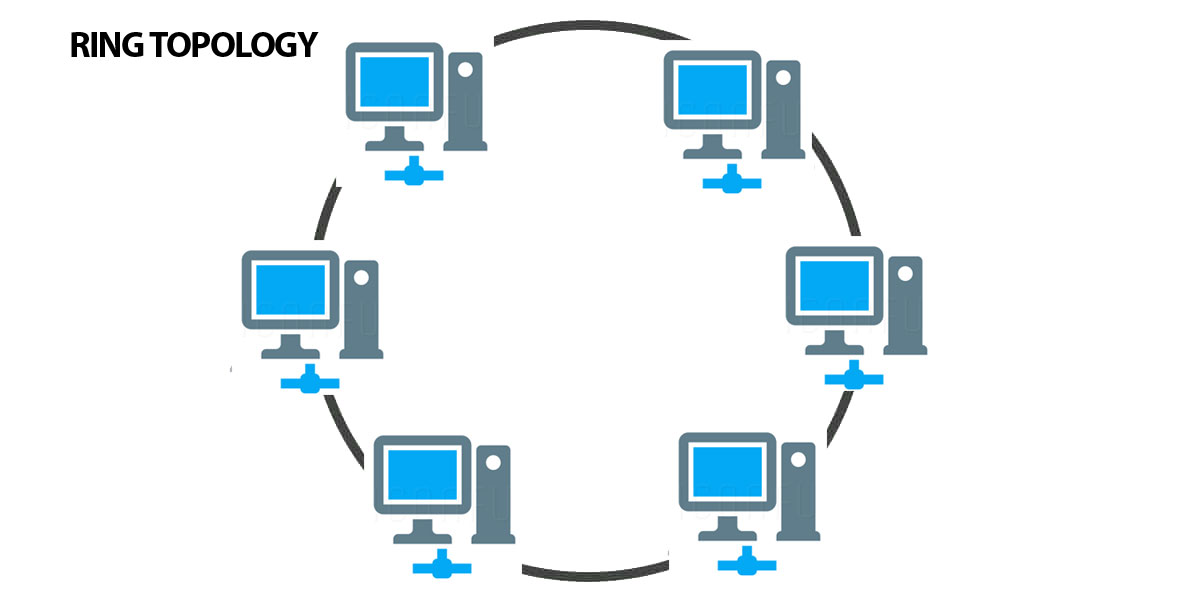 When a device receives a data tends to be for another device, its repeater generates a bit and passes it to the other. The data are transmitted in a packet of frames. As the destination recognizes the address, it copies the frame into a local buffer. This ring topology is ideally used on school and college campuses.
When a device receives a data tends to be for another device, its repeater generates a bit and passes it to the other. The data are transmitted in a packet of frames. As the destination recognizes the address, it copies the frame into a local buffer. This ring topology is ideally used on school and college campuses.
Advantages of ring topology:
-
-
- Can handle workload greater than a star topology
- There is no need of network server for the management of the connections
- Cheaper than a star topology as less wiring is required
- A large network can be created by adding a token ring
-
Disadvantages of ring topology:
-
-
- A break in the ring can collapse the entire topology
- Much slower than the Ethernet network
- Any addition or removal of devices affects the entire network
-
Tree topology
A tree topology is the generalization of the bus topology. A number of star topologies are connected together into a bus. The transmission medium is a branching cable with zero closed loops. The tree topology begins with a connection from the head. The branches are the various star topologies connected through the hub. Each hub acts the root of the topology. The transmission of the data propagates through a medium and the data can be received to all other stations.
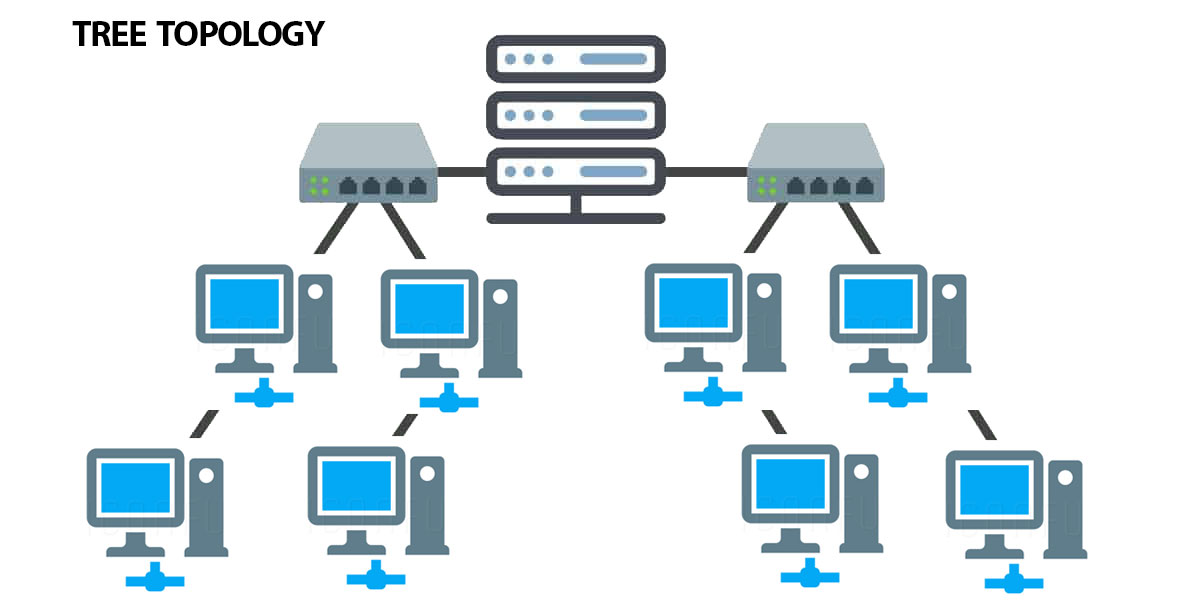 The tree topology supports the future expansion of hybrid networking which is much better than bus topology or star topology.
The tree topology supports the future expansion of hybrid networking which is much better than bus topology or star topology.
Advantages of tree topology:
-
-
- The tree topology is suited as best for the branches network
- Supported by the hardware and software vendors
-
Disadvantages of tree topology:
-
-
- More expensive as require more hubs for installation
- If the backbone fails, the entire network will collapse
- Very difficult to configure
-
Mesh topology:
The routes concept was introduced through mesh topology. Unlike ring topology, the data can be transmitted and received from multiple sources to destinations. In a mesh topology, every device has its dedicated point-to-point link. This dedicated word implies carrying traffic between the two devices.
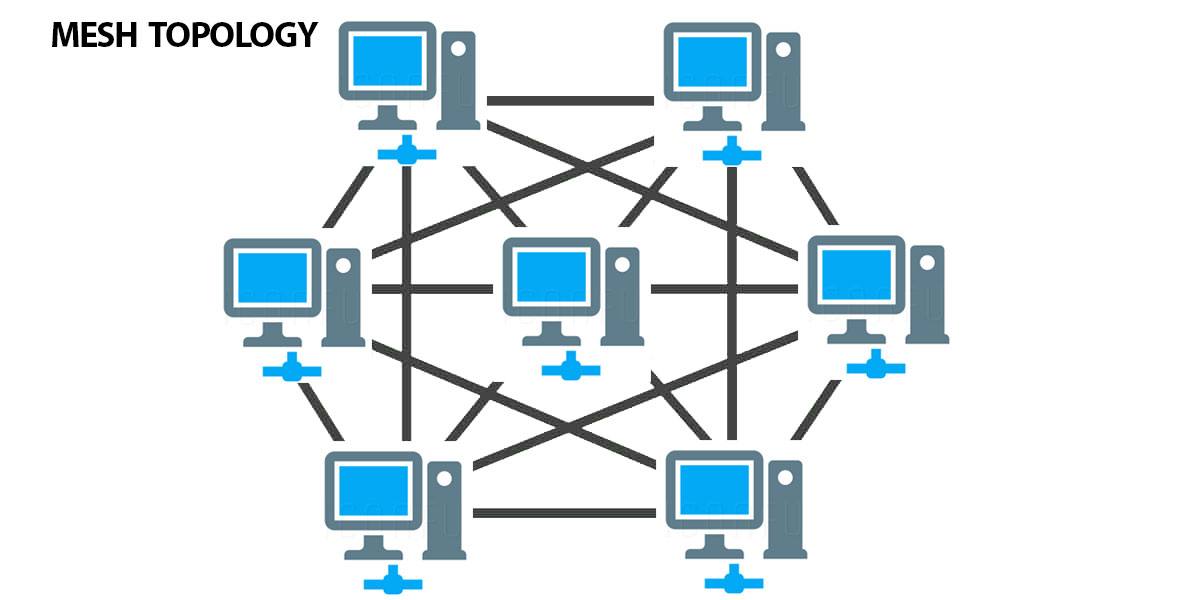 A network in which each device is connected to other through mesh topology is called as a full mesh.
A network in which each device is connected to other through mesh topology is called as a full mesh.
Advantages of mesh topology:
- There is no traffic problem due to a dedicated link
- The topology is quite robust.
- Troubleshooting is easier
- Security for data travels with the dedicated line
- If one link fails, it does affect the other links
Disadvantages of mesh topology:
- Installation and reconnection is difficult
- The hardware required for the mesh topology is expensive
- A large amount of cabling and I/O ports are required.
Which Topology requires less Cabling
Bus topology is a network topology that requires less cabling compared to other topologies.
In a bus topology, all devices on the network are connected to a single cable or a pair of cables that act as a shared communication medium. The backbone cable runs from one end of the network to the other, and all devices tap into the cable at various points along the way. The backbone cable is typically made of coaxial cable or twisted pair cable.
Because all devices share the same communication medium, bus topology requires less cabling compared to other topologies. For example, in a star topology, each device is connected to a central hub using a separate cable. As the number of devices on the network grows, the amount of cabling required for a star topology increases exponentially.



